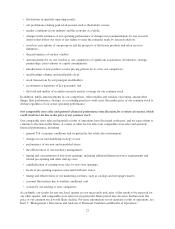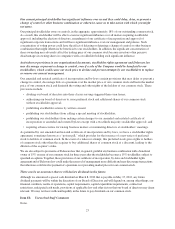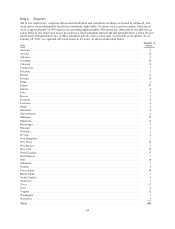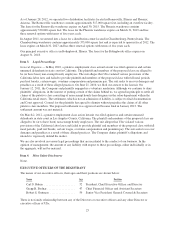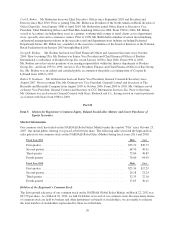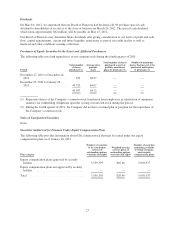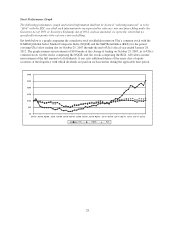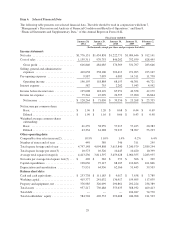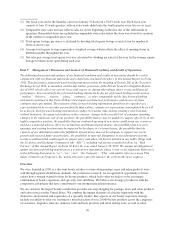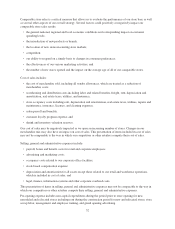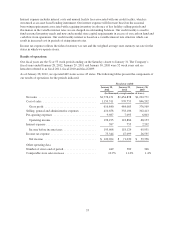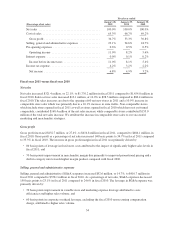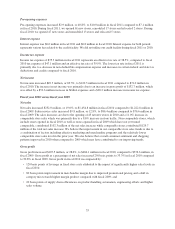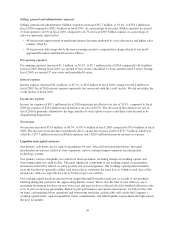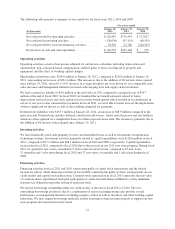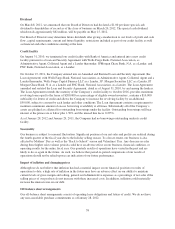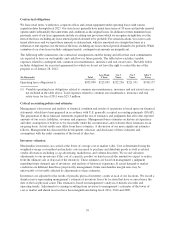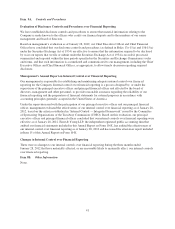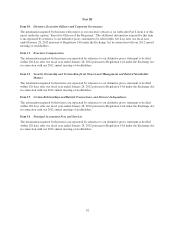Ulta 2011 Annual Report Download - page 36
Download and view the complete annual report
Please find page 36 of the 2011 Ulta annual report below. You can navigate through the pages in the report by either clicking on the pages listed below, or by using the keyword search tool below to find specific information within the annual report.Comparable store sales is a critical measure that allows us to evaluate the performance of our store base as well
as several other aspects of our overall strategy. Several factors could positively or negatively impact our
comparable store sales results:
‰the general national, regional and local economic conditions and corresponding impact on customer
spending levels;
‰the introduction of new products or brands;
‰the location of new stores in existing store markets;
‰competition;
‰our ability to respond on a timely basis to changes in consumer preferences;
‰the effectiveness of our various marketing activities; and
‰the number of new stores opened and the impact on the average age of all of our comparable stores.
Cost of sales includes:
‰the cost of merchandise sold, including all vendor allowances, which are treated as a reduction of
merchandise costs;
‰warehousing and distribution costs including labor and related benefits, freight, rent, depreciation and
amortization, real estate taxes, utilities, and insurance;
‰store occupancy costs including rent, depreciation and amortization, real estate taxes, utilities, repairs and
maintenance, insurance, licenses, and cleaning expenses;
‰salon payroll and benefits;
‰customer loyalty program expense; and
‰shrink and inventory valuation reserves.
Our cost of sales may be negatively impacted as we open an increasing number of stores. Changes in our
merchandise mix may also have an impact on cost of sales. This presentation of items included in cost of sales
may not be comparable to the way in which our competitors or other retailers compute their cost of sales.
Selling, general and administrative expenses include:
‰payroll, bonus and benefit costs for retail and corporate employees;
‰advertising and marketing costs;
‰occupancy costs related to our corporate office facilities;
‰stock-based compensation expense;
‰depreciation and amortization for all assets except those related to our retail and warehouse operations,
which is included in cost of sales; and
‰legal, finance, information systems and other corporate overhead costs.
This presentation of items in selling, general and administrative expenses may not be comparable to the way in
which our competitors or other retailers compute their selling, general and administrative expenses.
Pre-opening expense includes non-capital expenditures during the period prior to store opening for new,
remodeled and relocated stores including rent during the construction period for new and relocated stores, store
set-up labor, management and employee training, and grand opening advertising.
32


